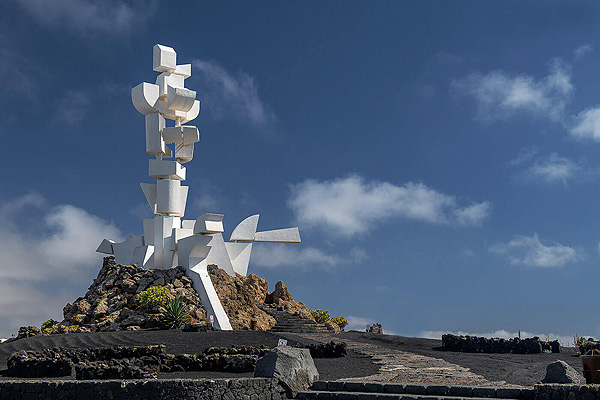
In the geographical centre of Lanzarote there is an important crossroads which holds one of the most symbolically loaded works of César Manrique, the architectural composite of the Casa-Museo del Campesino and Monumento a la Fecundidad.
This consists of several buildings inspired by the prototypical traditional architecture of the island, combined with the most characteristic elements from the different parts of the island such as fireplaces, threshing floors, water tanks, patios, carpentry workshops and winepresses.
Isolated on the horizon, the monumental sculpture “Fecundidad” is dedicated to the farmers of Lanzarote and is made of old water tanks from sailboats and objects painted and assembled to create a visually impressive composite of geometrical shapes.
In the construction of the Casa-Museo del Campesino, a semicircular floor stands out, built around a central open square which leads to different halls. Inside these rooms numerous objects and tools are on exhibition, all of which are connected with the culture and agriculture of the island.
The Casa-Museo del Campesino and Monumento a la Fecundidad give a splendid and avant-garde insight into the island’s architecture which gains renewed meaning to-day, owing above all, to the bridge it establishes between the traditional and the modern.
More buildings were added to finish a project started by César Manrique before his death. These works were carried out in the interior of an old quarry dedicated to the extraction of rock. The works, managed by Ildefonso Aguilar, consisted mainly of the creation of new areas for specific uses, a restaurant specializing in local cuisine, a shop for handcrafted products and an area used for folkloric exhibitions and live workshops.